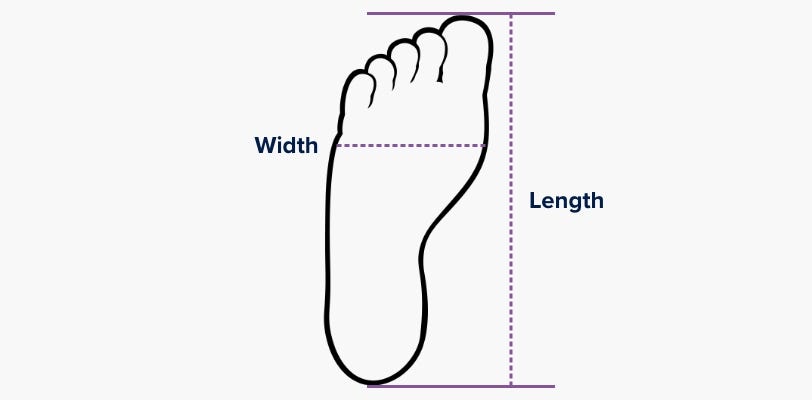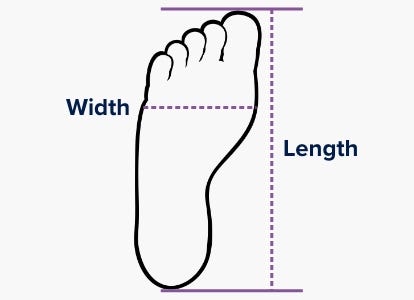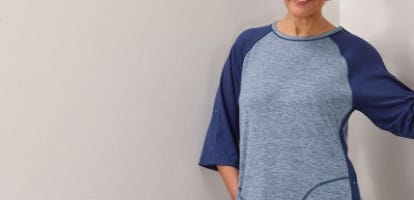Home > Size Chart > Footwear
Footwear Size Chart
Shoes are an important part of any outfit. They guard against slips and falls, promote proper walking and standing postures, and protect your feet from bruises and injury. However, shoes can be difficult for older people to put on, and the person may also have foot conditions such as bunions that make it difficult to find the right size. At Silverts, we offer a wide range of shoe styles and sizes to suit men's and women's needs.
Keep in mind each of our shoe styles vary slightly in sizing so it is best to review the product's specific size chart. This can be found on the product's page just above where you click to choose your size.
| Size | Women's | Men's |
|---|---|---|
| S | 5 - 6 | 6 - 7 |
| M | 7 - 8 | 8 - 9 |
| L | 9 - 10 | 10 - 11 |
| XL | 11 - 12 | 12 - 13 |
| 2XL | 13 - 14 | 14 - 15 |
Women's Adaptive Shoe Size Chart
| Size | Foot Length | Foot Width | Foot Circumference |
|---|---|---|---|
| 6 | 9 | 3.25 | 9.25 |
| 7 | 9.25 | 3.25 | 9.5 |
| 8 | 9.5 | 3.5 | 9.75 |
| 9 | 10 | 3.5 | 10 |
| 10 | 10.25 | 3.5 | 10.25 |
| 11 | 10.5 | 3.75 | 10.5 |
| 12 | 11 | 3.75 | 10.75 |
All measurements are in inches
Men's Adaptive Shoe Size Chart
| Size | Foot Length | Foot Width | Foot Circumference |
|---|---|---|---|
| 7 | 9.75 | 3.25 | 11.25 |
| 8 | 10 | 3.5 | 11.25 |
| 9 | 10.5 | 3.5 | 12 |
| 10 | 10.75 | 3.5 | 12 |
| 11 | 11 | 4 | 12.25 |
| 12 | 11.5 | 4 | 12.5 |
| 13 | 11.75 | 4 | 13 |
| 14 | 12 | 4 | 13 |
All measurements are in inches
How to Measure for Adaptive Shoe Sizes at Home
First, you need to gather your materials: two pieces of paper, a pencil, and a measuring tape or ruler. Having a friend can help you, but you can still measure your feet by yourself. Here are the steps to measure your feet:




- Place the first piece of paper on a hard surface and position your foot in the middle of the sheet of paper. Trace around your foot, or have a friend do it for you if you have trouble bending over.
- Repeat the same process for the other foot.
- Take the ourlines of both feet and measure from the tip of the longest toe to the end of the heel. In most people, the big toe will be the longest toe, but sometimes the index toe is the longer one. Use whichever one sticks out more as your starting point. Don't round up or down on the measurement — accuracy is key here!
-
If your feet have slightly different measurements, that's fine. It's common for one foot to be slightly larger than the other. Add 1/4 to 1/2 an inch to the length in order to give some toe wiggle room. Take the largest measurement and compare it to the size chart for the brand you want to buy from. That is the shoe that you should buy.
- To determine the width, measure across the broadest part of the foot (usually the ball of the foot right below your toes). Once again, compare that to the size chart to determine if you need a narrow, regular, or wide shoe.
Other Tips for Measuring Your Shoe Size
You can take several steps to ensure that you get a more accurate measurement of your feet. Some of our tips are:


- Measure your feet after a full day of standing or walking. Your feet swell up and become larger during the day, and your shoes need to be large enough to accommodate that change in size. (Shop our collection of shoes for swollen feet and slippers for swollen feet.)
- Measure your shoe size while wearing whatever socks or stockings you plan wear with the shoes. Only measure your feet while barefoot if you plan to wear the shoes barefoot (i.e. you are buying sandals).
- Always measure both feet. Most people have slightly asymmetrical feet and each foot will give you slightly different measurements. Always choose the largest measurement and use that to determine your shoe size.
- Be careful when outlining your foot and try not to wobble the pencil so it adds to or reduces the size of your foot. The increments between shoe sizes are very small, sometimes only 1/8-inch, so accuracy is key. Don't round up or down either. Just record the exact measurement and use that to determine your shoe size.
Not sure if your shoes fit? Still unsure about shopping sizes online? Read about it on our blog. Learn More










The information below is required for social login
Log in
Nursing Home Accounts: Not sure of your account sign in details? Call Customer Service at 1-800-387-7088